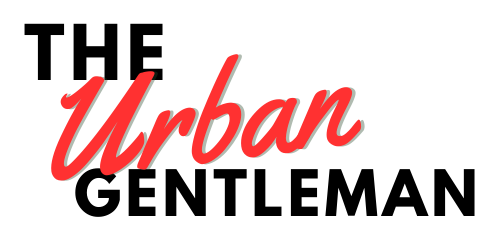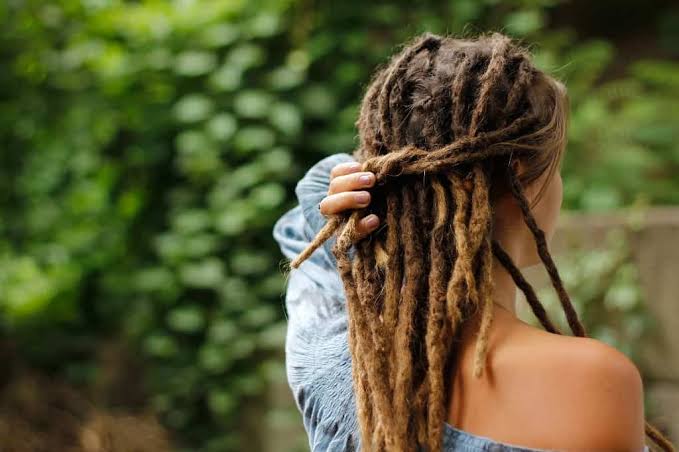Hair speaks a lot about your personality. The way you look and your first impression is always driven by your hair. While the effect of hair on your look is not a new factor, there might be a chance that you do not know how people around you have different types of hair and where it originates from.
Silky smooth or bold curls, every hair type and style has a story to tell.
Dreadlocks are possibly the most talked about hairstyle, famous amongst different groups all across the globe. They symbolize boldness, free-spirited nature, and wildness.
What is so special about dreadlocks that make them a celebrated hairstyle amongst free-hearted people? Digging deep into its history and facts that might amuse you will answer your question.
Dreadlocks: What are They?
You must have heard about the famous dreadlocks that have been a part of various civilizations for decades. Originally, dreadlocks were formed when hair was left not combed/brushed for days, resulting in tightly tangled hair.
However, in the last decade, it has become a much-celebrated hairstyle that people go for willingly and spend chunks of money on getting the perfect lock.

Where did dreadlocks originate? How did the hairstyle originate? How did it become popular amongst fashionistas? The answer to all your questions lies in the historical stories about dreadlocks. Let’s dig and find some interesting facts.
Interesting Facts About Dreadlocks and Their History
The historical evolution of dreadlocks it goes back to the stories of Aztec priests from the South, Egyptian mummies, Afro-Buddhist in Japan, and the famous Shiva-Jata. The best way to understand and trace where dreadlocks originate is to create categorical division-
1. Cultural Significance

- The Aztec Priests: Aztec priests from the south were once a very powerful group of people who dominated the area politically, economically, and culturally. An individual who decided to join them was supposed to cut off all his hair. Once the hair starts to grow back, they are not allowed to ever cut or style them. This resulted in the forming of dreadlocks, which became a symbol of power. The moldering in hair signified strength.
- Himba Tribe: A nomadic tribe who roamed around throughout the 16th century was seen with dreadlocks. Dreadlocks became a part of their identity as they protected them from insects and the sun. In addition, they never styled their hair as dreadlocks symbolized their carefree nature as well.
- Maori Tribe: The Maori Tribe is native to New Zealand. Their ties with dreadlocks are possibly the most interesting fact you have read about the hairstyle. Dreadlocks were a symbol of vengeance in the tribe. Every time a tribe lost their loved one, they would let their hair grow untouched till they had secured vengeance. It was also believed that pregnant women should not cut their hair and let it grow wild and free as it would provide more strength and power to the baby.
- Maasai Tribe: The Maasai Tribe of Kenya is known for its warrior spirit and semi-nomadic way of life. It is believed that when a boy began his journey as a nomad with the tribe, he started to grow dreadlocks. Dreadlocks were supposed to symbolize his transition into a warrior. Amongst the tribe, dreadlocks were referred to as warrior locks.
- African story: Dreadlocks and African countries are closely tied. In many parts of Africa, it was believed that babies who were born with natural dreadlocks were blessed with special and sacred power. Referred to as “dadas,” they were considered spiritual beings.
2. Religious Significance

- Rastafari: The Rastafari movement is a celebrated event in the Bible. Dreadlocks were an important part of their movement and eventually became a part of their religious ritual. Followers of the movement are seen with dreadlocks to date in many parts of the world.
- Shiva-Jata: Shiva, a deity worshipped especially by those who follow the Hindu religion, is called the creator of the universe. With immense power and strength, Shiva is believed to have control over the universe. He gets his strength from his dreadlocks (Jata). Jata is a Sanskrit word translated to “twisted locks of hair” in English. As dreadlocks are supposed to attract cosmic energy, they give Shiva more power and concentration. It is also believed that Shiva’s Jata is where the holy river Ganga flows from.
- Rasta-Buddhist: The ties between Rastafarians and Buddhists in Japan are not unknown. It was their shared belief in discarding materialism. Buddhists incorporated dreadlocks as their hairstyle as it symbolized the order of nature. There are references to Buddhists, including Rasta members, in their preachings as they were highly impressed by Rastafarians’ detachment to earthly materials and devotion to Jah. In addition, monks during this period also carried dreadlocks as a source of their strength and power.
- Sadhus: Sadhus are considered to be intelligent nomads in India. Often seen as detached from material life, there are many instances of Sadhus carrying dreadlocks. A connection to higher power and detachment from vanity is best represented in their dreadlocks. Even today, there are many Sadhus all across India with dreadlocks.
3. Historical Evolution

- Egyptian Mummies: Although it is hard to trace the exact date or period for the origin of dreadlocks. Historians believe that the earliest dreadlocks were seen in Egyptian Mummies. Even art from that time features figures with dreadlocks. Recently, many skulls from the period were found with intact dreadlocks, which took archaeologists by shock.
- Polish Plait: While dreadlocks mostly symbolized strength and power, it was not always the case during the rule of King Christian IV. The tradition of polished plait was nothing but a mere accidental felting of hair. Soon, this became a part of tradition in Norway and Denmark, and dreadlocks became a gesture to please the king.
- Ancient Greeks: Ancient Greeks were highly influenced by their Eastern and Mediterranean neighbors. The influence was seen when ancient Greeks started to tie their hair into dreadlocks. In addition, the period of dreadlocks’ popularity in Greece and Vedas is similar. A fresco from the period shows images of fighters wearing dreadlocks.
- Polish dreadlocks: When stories about African dreadlocks are not hidden, Polish dreadlocks come as a shock to many. Historians argue that Polish Plaits were essentially dreadlocks. This became a goto hairstyle when men and women during the period were busy finding means to livelihood, and hairstyling was often neglected.
- Irish dreadlocks: Irish dreadlocks are not a discovery if you have read works of Shakespeare describing Irishmen with dreadlocks. They called dreadlocks fairylockds during the late 1500s. Interestingly, the term fair locks was used as it was a common story that fairies came and pleated the hair of children into locks.
Dreadlocks – The Revival and Fashion
What was once considered a neglect of hairstyling and low effort soon became a statement of style and a celebrated hairstyle all across the globe. Dreadlocks became a symbol of style when famous musicians were seen carrying them. Many instances indicate the same that you would love reading-

- Reggae Music: A native to Jamaican Art, Reggae music gained much popularity in the 1970s. Every big artist of the genre was seen wearing dreadlocks, and followers could not resist getting dreadlocks for themselves.
- Bob Marley: Not just the music and art created by Bob Marley but his style and carefree spirit also created a buzz around the globe. He is considered the sole bearer of dreadlocks when it comes to its popularity in mainstream music and media.
- Whoopi Goldberg, Bert Ashe, and Justin Bieber: From artists of the 1900s to present-day artists, everyone has been seen wearing dreadlocks, bringing them into the media like never before.
- Hair stylists and Salons: With the development of dreadlocks in pop culture, the hair care industry started coming up with products for styling dreadlocks. Upscale salons offered numerous variations of dreadlocks that did not require months to grow.
- Branding: Dreadlocks are not only a part of tribal or religious groups. With high-end brands coming into the picture, dreadlocks have become mainstream. In a project launched by Christain Dior named- Rasta-inspired Line, you can see evident references to dreadlocks.
- Imitating African style: Imitating African style is not something new to the world. Artists and performers from all around the globe are greatly inspired by African styling, which includes dreadlocks. Famous artists like Kanye West are a leading example. Kudos to Afticans for keeping the dreadlocks alive, as there is nothing in them that we don’t like.
Summing Up!
From Egyptian Mummies to Kanye West, there is something magical about dreadlocks that they stay apart. Dreadlocks have always symbolized strength, power, and free spirit in history, and to date, the boldness in dreadlocks creates a whole different aura that forces you to take a look.
While they seem hard to maintain, there are amazing hair care products available that are created solely for dreadlocks.
Whether you have natural dreadlocks or a styled one, they are meant to make you stand out and speak about your confident personality.
There are different types of dreadlocks variations you can go for, including the classic and neat skinny dreadlocks.
Did you find these stories interesting and amusing? Or are you planning to get yourself dreadlocks or, as we like to call them, love locks?
Frequently Asked Questions
Why are They Called Dreadlocks?
While dreadlocks are only one of the many names that the hairstyle is called if you go by the story, it is believed that the hairstyle appeared “dreadful” to many in the higher strata of society, and this is where the word dreadlocks came from.
Where Did Dreadlocks Originate?
The origin of dreadlocks can not be traced to an exact period. However, going by the words and findings of historians, the earliest instances of dreadlocks were seen in Vedas and Egyptian Mummies. The presence of dreadlocks in African Tribal groups also goes way back into history.
Can I Get Dreadlocks if I Have Straight Hair?
Yes, dreadlocks have now become just another hairstyle that you can get while sitting at your favorite salon. However, you must remember that they require extra care and can cause headaches at times.





